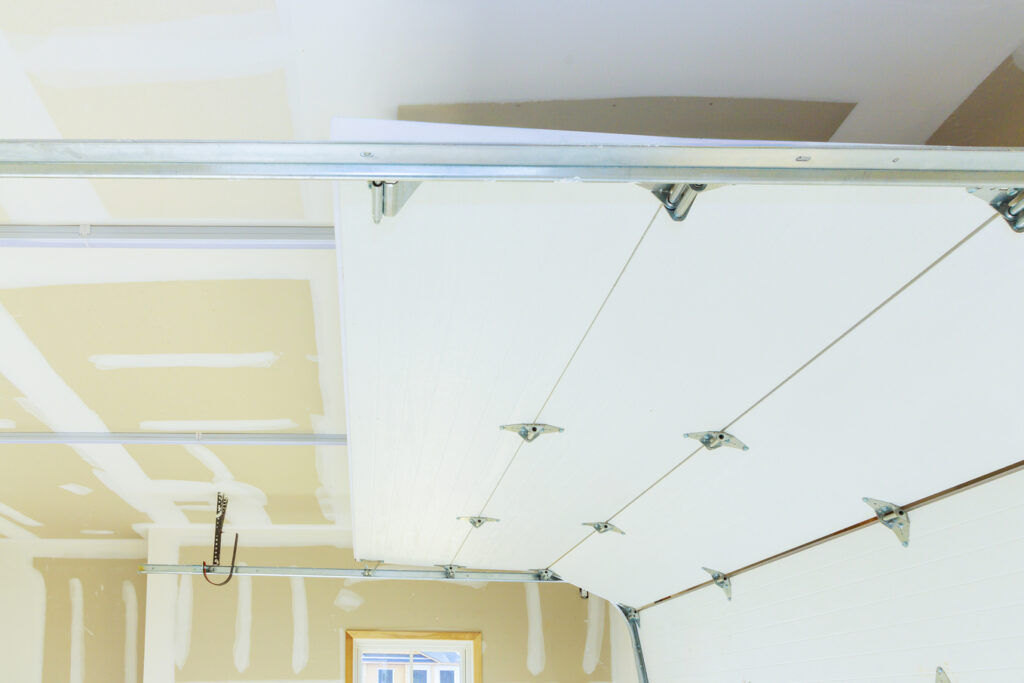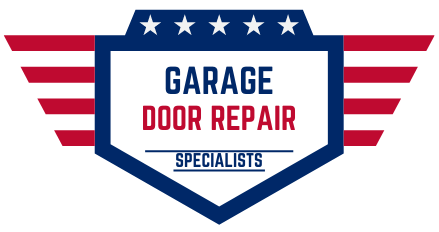
As a critical access point for our homes and vehicles, garage doors take plenty of wear and tear over their lifespan. When your garage door starts acting up and causes problems opening or closing, it can be incredibly disruptive to your normal routine. Thankfully, many common garage door issues can be addressed with simple DIY troubleshooting and repairs.
This guide will walk you through the key components of a garage door system, common problems to look out for, and step-by-step instructions for basic repairs you can tackle in your garage. Let’s get started!
Understanding Garage Door Components
Before diving into specific repairs, it’s crucial to familiarize yourself with the key components that make up a garage door system:
Door Panels – The large movable sections that make up the body of the garage door. Typically constructed of aluminum, steel, fiberglass, or wood.
Tracks – Vertical steel tracks on both sides that guide the rollers and enable the door to move up and down smoothly.
Rollers – Wheels mounted to the door that rolls inside the door tracks as they open and close.
Hinges – Connect individual door panels into a cohesive unit.
Springs – Provide counterbalance to offset the door’s weight enabling easy lifting and lowering. Two types:
- Torsion Springs – Mounted on a metal shaft running parallel above the door opening.
- Extension Springs – Mounted on either side of the horizontal tracks.
Cables – On torsion spring doors, cables connect the bottom of the door to the springs for smooth tension transfers.
Garage Door Opener – A motorized electric opener that connects to the door panels to automatically raise and lower the door with a remote or wall-mounted switch.
Safety First
When conducting any garage door repairs, safety should always be the top priority. These doors weigh hundreds of pounds and the springs are under incredible tension – caution is essential to avoid accidents:
Disconnect Power – Unplug the electric garage door opener before repairs to avoid sudden operation.
Wear Gloves – Protect your hands from sharp metal edges or pinch hazards.
Use Caution with Springs – Adjustments should only be made by those who understand the intricate balance of counterweights and tensions keeping the system running smoothly.
Troubleshooting Common Garage Door Problems
Many typical garage door issues result from routine wear-and-tear of high-use components. By methodically inspecting the door system, you can diagnose most problems.
The Door Won’t Open or Close
Start troubleshooting by checking:
- Power Supply – Is the outlet working? Check fuses/circuit breakers.
- Remote Batteries If using the automatic opener, replace dead batteries in remotes to prevent signal transmission.
- Obstructions – Are there any objects or debris impeding the door’s path? Is the vehicle parked too close obstructing safety sensors? Remove items blocking the way.
- Sensors – Infrared photo-eyes should blink indicating they are aligned and communicating properly. Realign if needed.
- Lubricate Components – Worn rollers, hinges, and locks can seize up until oiled preventing smooth door travels.
The Door is Noisy
Clattering garage doors usually signify hardware issues:
- Tighten Hardware – Check bolts, nuts, and brackets are snug not allowing components to vibrate loosely.
- Lubricate – Oil any squeaky rollers, hinges, pulleys, or torsion springs eliminating friction and grinding.
- Replace Old Rollers – Upgrade deteriorated rollers to renew smooth travels within tracks.
- Inspect Track Alignment – Bouncing off tracks causes noise. Realign or replace bent tracks.
The Door is Uneven or Sagging
Doors no longer sitting square at the top indicate broken tension components:
- Adjust Spring Tension – Torsion and extension springs may need adjusted tension or replacement if worn out.
- Check Cables – Frayed or broken cables cause uneven weight distributions. Replace damaged cables immediately.
- Inspect Hinges – Level doors by tightening loose hinges or replacing broken ones.
The Door Reverses Before Closing
This usually signals problems with safety mechanisms:
- Close-Limit Switch Issue – Adjust the switch to determine a fully closed position.
- Photo Eye Sensor Misaligned – Beam obstruction triggers auto-reverse requiring realignments.
The Door Won’t Stay Closed
If the door reopens without pressing the remote, it signifies hardware issues:
- Lock Malfunction – Manually engage emergency release to open the door and inspect lock catching mechanics.
- Close-Limit Switch Misaligned – Loosen screws and adjust the switch slightly to find a sweet spot holding door closed. Retest after each adjustment.
DIY Garage Door Repairs
Once you’ve diagnosed the specific issue plaguing your garage door system through methodical troubleshooting assessments, many problems can be addressed with simple DIY repairs.
Replacing Worn Rollers
Over time, metal rollers carrying doors’ weight deteriorate grinding tracks. Renewing rollers restores smooth travels:
- Close Door and Disconnect Power – Closed doors allow access to roller mounts easily but prevent accidental drops. Unplug the automatic opener too.
- Remove Old Roller – Typically held by bracket clamps or tension screws. Note the orientation of the roller before removing it.
- Install New Roller – Align and insert replacement roller accordingly then refasten the hardware.
- Repeat for Other Rollers – Systematic inspection will reveal multiple worn rollers needing replacement.
Adjusting the Close-Limit Switch
If the automatic garage door opener overshoots closed or open positions misaligning doors, adjusting this switch rectifies alignments:
- Locate Switch – Typically on opener’s motor head is activated when the door reaches the designated point.
- Adjust Switch – Loosen setscrew to nudge the switch over incrementally until the door stops in the correct spot.
- Test Operation – Run full open/close cycles after each adjustment verifying new switch position holds solid.
When to Call a Professional
Though many repairs look straightforward on paper, certain issues beyond general mechanical competencies warrant hiring professional garage door technicians:
- Broken Springs – Torsion and extension spring adjustments risk serious injuries if mishandled. Leave it to experts.
- Bent Tracks – Attempting to realign tricks trying salvaging misaligned tracks usually fails necessitating track replacements best left to veterans with tools and parts unavailable to homeowners.
- Electrical Problems – Faulty gears, fried motherboards, or shorts inside automatic openers should be tackled by those well-versed in garage door electricals unless basic loose wirings.
Maintaining Your Garage Door
Implementing a consistent maintenance routine minimizes operational issues and extends garage door lifespan significantly:
- Lubricate Components – Hinges, rollers, and locks keep mechanisms running smoothly preventing seizing.
- Inspect Hardware – Look for loose fasteners or frayed cables needing tightenings or replacements preventing further damage over time.
- Check Springs and Cables – Have technicians gauge the useful life remaining on these tension components and proactively install replacements avoiding unexpected breakages.
- Test Safety Systems – Ensure infrared sensors stay aligned to trigger stop/reverse actions keeping systems safe.
- Clean Tracks – Remove debris buildup inside tracks that impedes door travel or corrodes rollers through contaminant friction.
Don’t let common garage door problems go unchecked creating bigger hassles down the road. Regularly inspecting and tuning up key hardware delivers smooth operation for years.
For more complex repairs involving electronics or spring systems, rely on seasoned professional technicians equipped with specialized tools, parts, and expertise to bring your garage door back to ship shape. Stay safe and save money by knowing which fixes you can handle versus when it pays leaving it to the veterans. Equipped with this definitive guide, you can get your garage door functioning expertly once more.
Go here now to find out more on garage door repair specialists in your area.
